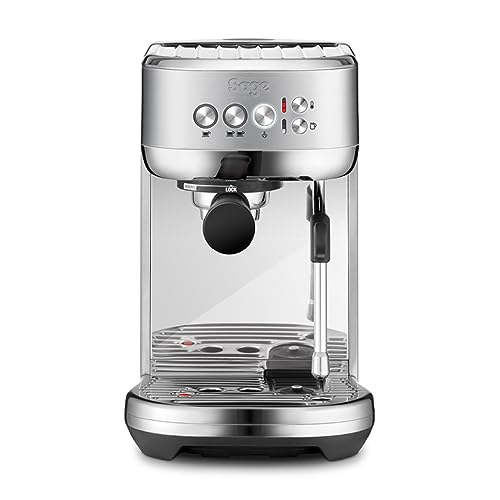How Does Machine Espresso Work?
Machine espresso employs precise pressure and amazing filter technology to make the delicious coffee we enjoy. How exactly does it work?

Espresso is made by pushing hot water under high pressure through finely-ground coffee. The process is similar to that of making drip coffee. However, the pressure is the primary difference.
The Head of the Group
The group head is the portafilter that is inserted when you are making espresso. It is responsible for dispersing water into the portafilter, and controlling the pressure of the extraction. There are a variety of types of group heads, each with their particular advantages and drawbacks. Some focus on temperature stability, others on pre-infusion features, and others are designed to control the lever. There are also some that include a mix of features, like the E61, which is considered the most popular choice among baristas due to its ability to offer multiple perks in one package.
As you can see in the above photo The group head features several notches where you place your portafilter before twisting it manually to secure it. A gasket of rubber is situated inside the notches to help make a seal when you insert your portafilter. The notches on the head allow for an exact location of the portafilter which is crucial to ensure an even extraction.
The group head does not just allow you to put in your portafilter easily however it also keeps a constant temperature. It does this by cycling hot water through the brew pan and around the portafilter, making sure that it is always at the correct temperature for extraction. It is crucial to keep in mind that even a tiny differences can make the distinction between a good and a great espresso.
The Pump
In contrast to piston machines that are manually operated, which rely on a lever to pressurize water, the rotary espresso machines use motorized pumps to deliver the nine atmospheric bars of pressure necessary for espresso extraction. The pressure builds up by removing tap water from a reservoir, and pumping it through a heat exchanger before being shot through the ground coffee inside the group head.
Pumps tend to be cheaper than piston-driven models, and they tend to last longer, although both types of machines may degrade with overuse and insufficient cleaning. Pumps are also more complex mechanically, which can increase the cost of even most basic models.
Certain espresso machines remove the pump completely and use steam pressure to brew espresso. The disadvantage of this is that the same boiler that produces steam also increases the temperature of water to the point of boiling, which can lead to excessive extraction. The machines must also constantly rebuild their pressure between cups. This takes energy and time.
Many espresso machines make use of the rotary or vibration pump, with a vibrating model using a rotating disc to create pressure and a rotary model pushing hot water through the grounds at high speed. Both models can make a great espresso, but Rotary machines are quieter and more durable than vibration pumps.
The Boiler
The boiler is the one that makes the water warm to a temperature that is ideal to extract. The steam produced gets to the portafilter which contains the espresso coffee grounds. It is then funneled into the cup. In this process, the steam causes pressure to push through the coffee grounds. This creates a layer crema on top. This is one of the hallmarks of a great espresso.
There are three kinds of espresso makers. They differ in the type of pump they employ and the degree of heat that the brew is. There are various ways to control the amount of brew, as well as the size of cup that can be produced by the machine.
The first espresso machines were steam-type. Suggested Website were steam types. The coffee tasted bitter and burned. The modern espresso machine was developed by the Milanese producers Luigi Bezzerra & Desiderio Pavoni.
The most commonly used espresso machine is a semiautomatic model with an electric pump. When people think of espresso machines, they picture these machines. With a semi-automatic espresso machine, you have to grind the beans and tamp them by hand. The pump provides regulated water flow and pressure. This is an excellent solution that combines human control with mechanised reliability.
The Filter
Espresso machines typically have a filter that separates the coffee grounds from the hot water. The filter is also an essential element of the machine's temperature control, as it prevents overheating.
Filters also aid in flavor since it allows for a longer flowering phase. This allows the beans to release their flavor and gives an opportunity for a better extraction.
However it is crucial to remember that even a great filter can result in a poor cup of coffee, since the quality of the beans and extraction are important.
This is where the magic happens, and it's what makes espresso taste good. The grouphead (also called the brewhead) is where you place the portafilter, the device that you use to put the grounds of your coffee into while making espresso.
Steam-driven espresso machines make use of hot water that is heated in an airtight container to make steam. The steam then pushes hot water through grounds of coffee at high pressure. These types of machines are generally cheaper and easier to maintain than pump-driven models. They are however limited in their ability to create the perfect conditions for brewing as they only operate with 1-1.5 bar of pressure. The ideal shot requires 9-10 bars.
In recent years, compressed air pump-driven espresso machines have been gaining popularity. They make use of an air compressor to force hot water into the ground and are more mobile than electric steam-driven espresso machines.
